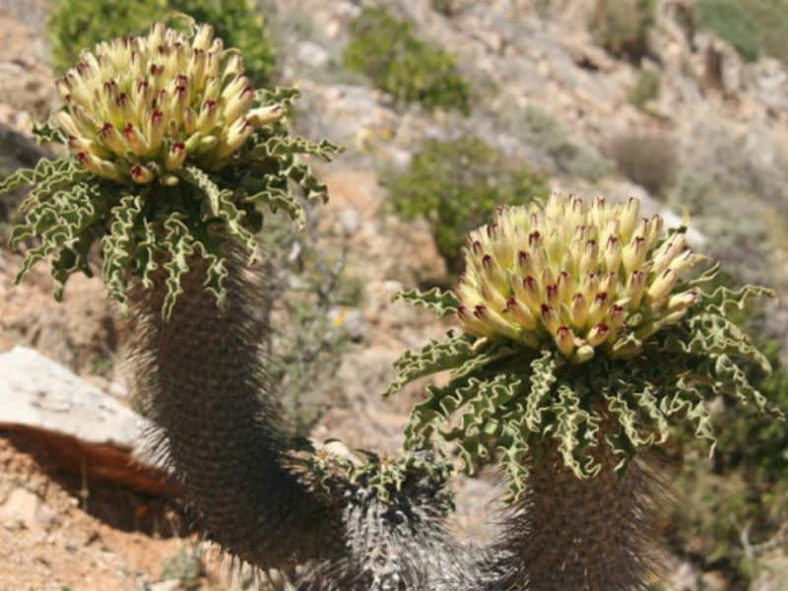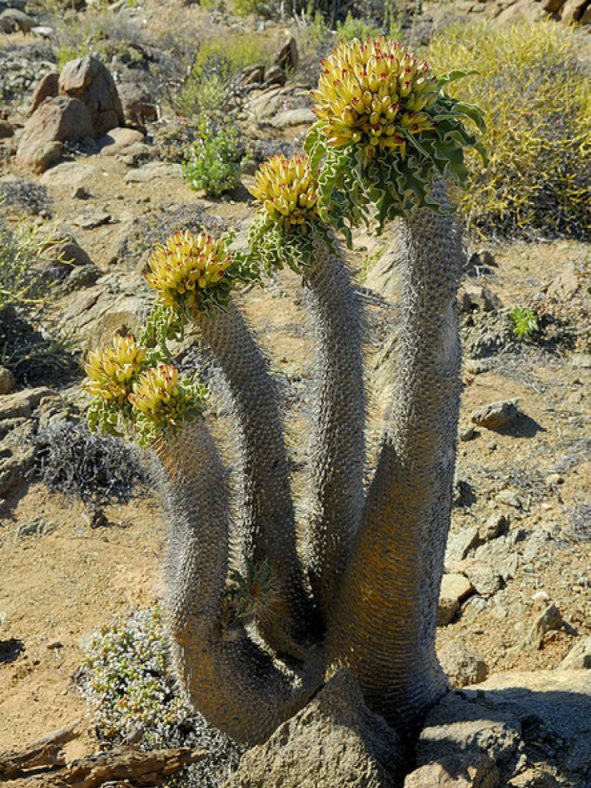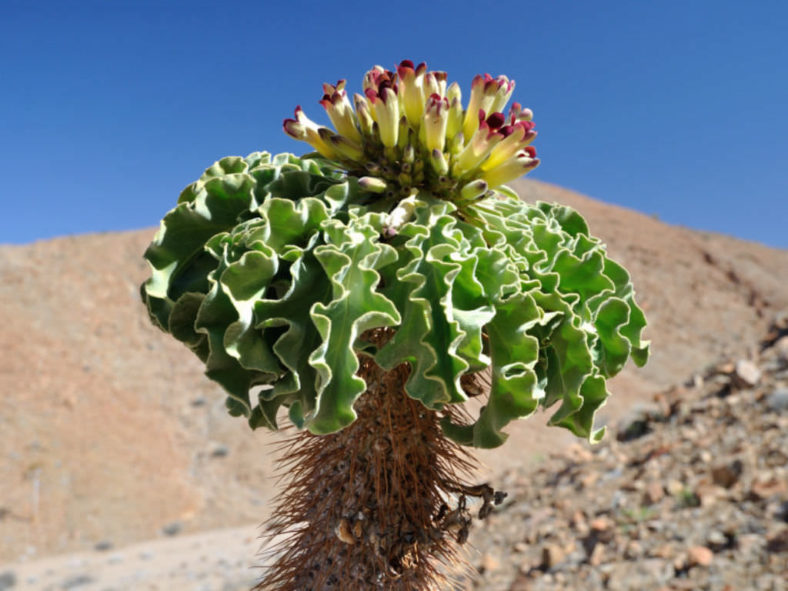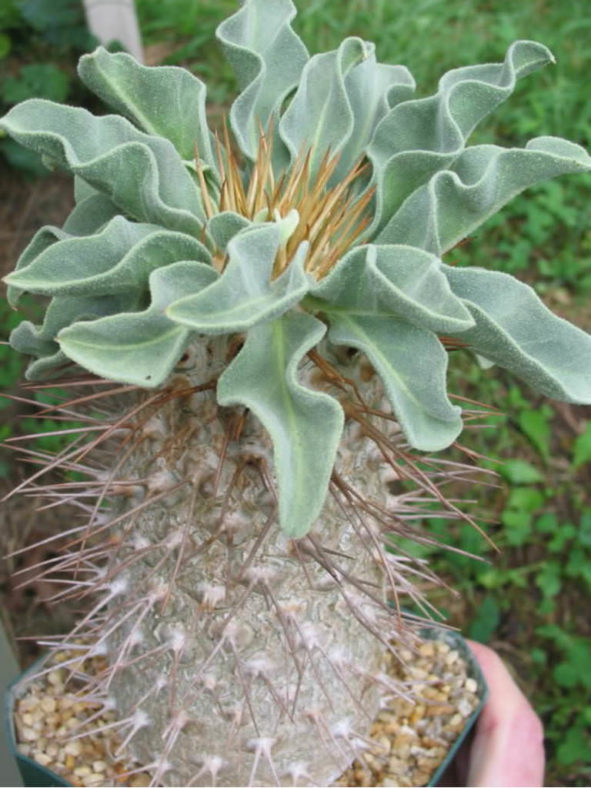Scientific Name
Pachypodium namaquanum (Wyley ex Harv.) Welw.
Common Name(s)
Elephant's Trunk, Club Foot, Halfmens (Afrikaans for Semi-Human)
Synonym(s)
Adenium namaquanum
Scientific Classification
Family: Apocynaceae
Subfamily: Apocynoideae
Tribe: Malouetieae
Genus: Pachypodium
Etymology
The specific epithet "namaquanum" (pronounced "na-MAWK-wan-um") refers to Namaqualand, an arid region of Namibia and South Africa.
Origin
Pachypodium namaquanum is native to Namibia and South Africa. It occurs in dry rocky deserts from 985 to 2,950 feet (300 to 900 m) above sea level.
Description
Pachypodium namaquanum is a slow-growing succulent with a cylindrical, simple or rarely branched stem covered with warty tubercles from which sharp spines protrude slightly downward. The stem can grow up to 10 feet (3 m) tall and 1 foot (30 cm) in diameter. The leaves are crowded at the tip of the trunk, forming a rosette. They are simple, obovate to oblong, grey-green, and densely velvety on both surfaces.
The flowers are tubular, red inside and yellow-green outside. They appear in late winter and spring and can reach a length of 2 inches (5 cm) and a diameter of 0.4 inches (1 cm). The fruit of two follicular mericarps is densely grey pubescent and can grow up to 1.6 inches (4 cm) long, tapering to the apex.

Hardiness
USDA hardiness zones 10b to 11b: from 40°F (4.4°C) to 45°F (7.2°C).
How to Grow and Care
The three parameters, light, temperature, and watering, are closely linked: you should not change one without the other. Therefore, it is important to note that the balance of these three parameters determines a plant's good or bad health. Pachypodiums need much light because they originally grow under full sun in tropical countries. Therefore, direct sunlight is not necessary, but the sunlight should not be shielded by natural view protection. A Pachypodium with low light will wither, its branches will be weak and appear "lean," and the leaves will be too big and soft. Over time, the Pachypodium will be susceptible to disease and fungus, and the plant will eventually die.
See more at How to Grow and Care for Pachypodium.
Links
- Back to genus Pachypodium
- Succupedia: Browse succulents by Scientific Name, Common Name, Genus, Family, USDA Hardiness Zone, Origin, or cacti by Genus
Photo Gallery
Click on a photo to see a larger version.


